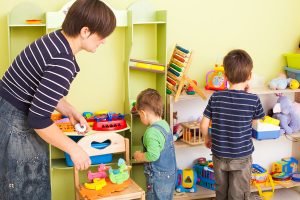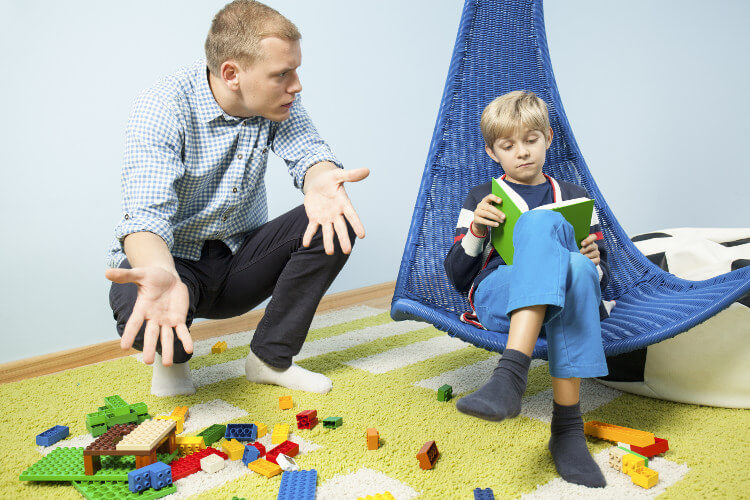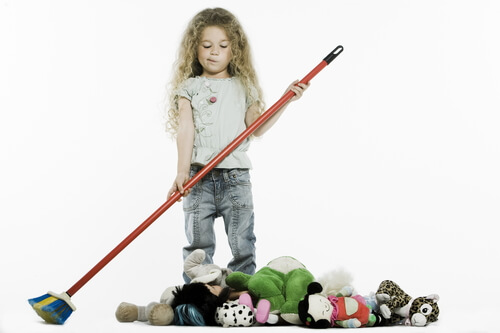10 Tips to Teach Children to Organize Their Room

If you’re having trouble teaching your children to organize their room and keep it tidy, here are some tips.
Children’s rooms are usually small, often shared and, in general, lack built-in storage space. However, these rooms house out-of-season clothing and even old toys.
Also, children cannot stay organized when the closet is crowded, the drawers are full and the toys cover the entire surface of the carpet. The solution is to order, store and simplify .
10 Tips to Teach Children to Organize Their Room
Children and messy rooms are nothing new. Here are some tips to help young children organize their room:
1. Have a Place for Each Item
With a specific place for everything, children will be more willing to put the objects back in their place and pleased next time they have to find some of their precious toys.
2. Provide a Lot of Storage Space
To offer more storage space, we recommend installing built-in cabinets, drawers, storage units, hooks or baskets. All of them must be at a height and position that are easy for children to access.
Also, you can label the shelves and bins to help the child know where some objects are going. If the child still can’t read, you can include photos and symbols.
3. Put a Routine in Order
Establishing a routine cleaning policy can work for your children and for the whole family by applying small changes.
Ideas may include making the bed each morning, hanging backpacks when returning from daycare or picking up toys before taking out others.

4. Use Shelves
Shelves aren’t only excellent for storing books, but also for displaying some of their toys and works of art that the child has designed.
5. Provide Assistance When They Need It
Depending on the child’s age, you may need to help the child start cleaning. For younger children, you can take advantage to interpret games or stories that encourage cleanliness, while teaching values such as independence and responsibility for their things.
6. Don’t Use Bribes or Rewards
To help foster the child’s independence and keep order in their room, you shouldn’t resort to bribes or rewards. Certainly, it works better if you’re guided and encouraged during the process.
“With a place for everything, they’ll be more willing to put the objects back in their place.”
7. Show Children Where to Store Their Clothes
Start with a pile of clothes and place the garments where they belong. If children don’t know how to hang clothes, this is a good time to teach them. When one pile is finished, you can move on to the next until the room is tidy.
8. Use Containers
Toy boxes and open shelves aren’t a place to store children’s possessions. To organize toys, the best solution is to store them in containers.
Certainly, you can use plastic containers for smaller toys, larger lidded containers for blocks, trucks and cars or for stuffed animals.
The advantage offered by containers is that they help parents control the amount of toys in use at the same time. As soon as they wish to play with a new toy, they have to deposit the previous toy in its relevant container.
9. Organize from Bottom to Top
According to your children’s height, we advise you to start organizing from the bottom of the room and move to the top.
Likewise, most of the toys and belongings used should be placed on the lower shelves, in the lower drawers or on the floor. The highest levels are designated for frequently used possessions, or even for parents‘ possessions, if sharing a storage unit with your child.

10. Get Involved in the Process
The last piece of advice to help teach children to organize their room is to get involved in the process. Together you can better design an organizational method that makes sense to them.
If they’re involved in the effort, they can better understand the logic of the organization and keep their room in good condition.
These simple strategies will help teach children to keep their rooms tidy and also allow you to calm down a bit and see a little less mess around the house.
Remember that proper organization is something that children will carry with them throughout their lives.
If you’re having trouble teaching your children to organize their room and keep it tidy, here are some tips.
Children’s rooms are usually small, often shared and, in general, lack built-in storage space. However, these rooms house out-of-season clothing and even old toys.
Also, children cannot stay organized when the closet is crowded, the drawers are full and the toys cover the entire surface of the carpet. The solution is to order, store and simplify .
10 Tips to Teach Children to Organize Their Room
Children and messy rooms are nothing new. Here are some tips to help young children organize their room:
1. Have a Place for Each Item
With a specific place for everything, children will be more willing to put the objects back in their place and pleased next time they have to find some of their precious toys.
2. Provide a Lot of Storage Space
To offer more storage space, we recommend installing built-in cabinets, drawers, storage units, hooks or baskets. All of them must be at a height and position that are easy for children to access.
Also, you can label the shelves and bins to help the child know where some objects are going. If the child still can’t read, you can include photos and symbols.
3. Put a Routine in Order
Establishing a routine cleaning policy can work for your children and for the whole family by applying small changes.
Ideas may include making the bed each morning, hanging backpacks when returning from daycare or picking up toys before taking out others.

4. Use Shelves
Shelves aren’t only excellent for storing books, but also for displaying some of their toys and works of art that the child has designed.
5. Provide Assistance When They Need It
Depending on the child’s age, you may need to help the child start cleaning. For younger children, you can take advantage to interpret games or stories that encourage cleanliness, while teaching values such as independence and responsibility for their things.
6. Don’t Use Bribes or Rewards
To help foster the child’s independence and keep order in their room, you shouldn’t resort to bribes or rewards. Certainly, it works better if you’re guided and encouraged during the process.
“With a place for everything, they’ll be more willing to put the objects back in their place.”
7. Show Children Where to Store Their Clothes
Start with a pile of clothes and place the garments where they belong. If children don’t know how to hang clothes, this is a good time to teach them. When one pile is finished, you can move on to the next until the room is tidy.
8. Use Containers
Toy boxes and open shelves aren’t a place to store children’s possessions. To organize toys, the best solution is to store them in containers.
Certainly, you can use plastic containers for smaller toys, larger lidded containers for blocks, trucks and cars or for stuffed animals.
The advantage offered by containers is that they help parents control the amount of toys in use at the same time. As soon as they wish to play with a new toy, they have to deposit the previous toy in its relevant container.
9. Organize from Bottom to Top
According to your children’s height, we advise you to start organizing from the bottom of the room and move to the top.
Likewise, most of the toys and belongings used should be placed on the lower shelves, in the lower drawers or on the floor. The highest levels are designated for frequently used possessions, or even for parents‘ possessions, if sharing a storage unit with your child.

10. Get Involved in the Process
The last piece of advice to help teach children to organize their room is to get involved in the process. Together you can better design an organizational method that makes sense to them.
If they’re involved in the effort, they can better understand the logic of the organization and keep their room in good condition.
These simple strategies will help teach children to keep their rooms tidy and also allow you to calm down a bit and see a little less mess around the house.
Remember that proper organization is something that children will carry with them throughout their lives.
This text is provided for informational purposes only and does not replace consultation with a professional. If in doubt, consult your specialist.








